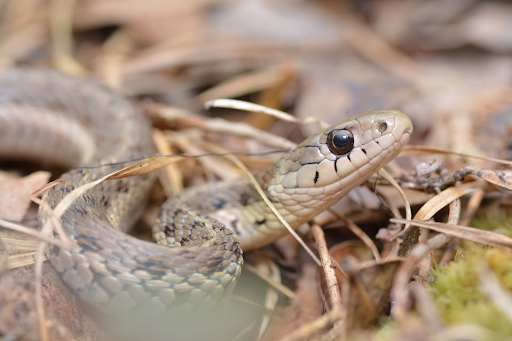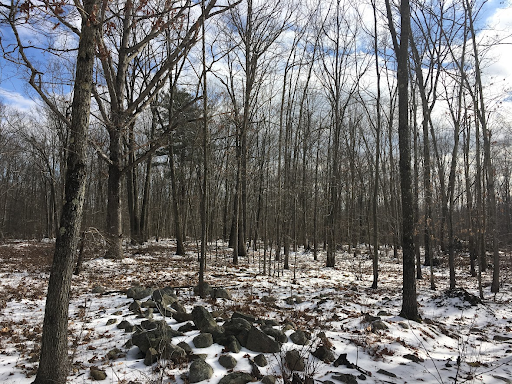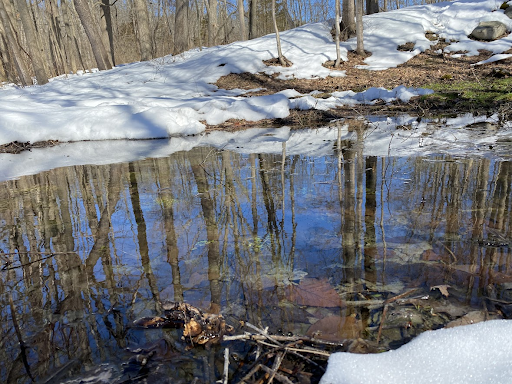Snow isn’t a welcome sight for many. It can obstruct travel plans, often requires shoveling, and creates giant, seemingly everlasting snow mountains that we have to circumvent in parking lots. Yet the services that snow provides, particularly to plants, wildlife, and the people who appreciate them, make all of those gripes seem a bit superficial. Temperate climates have dealt with snow for a very long time, and consequently, wildlife has found great utility in it. Snow is beneficial in several respects.
A basic rule for surviving winter, for both plants and animals, is to avoid freezing. A common strategy to accomplish this, at least for animals, is to bury beneath the earth’s surface at a depth that is resistant to freezing. Animals will seek refuge beneath leaf litter, logs, rocks, and within burrows and crevices. However, in extremely cold periods, frigid air can permeate into those places and harm (and in some instances kill) life that is temporarily lying dormant. As it turns out, a thick layer of snow (at least 8 inches) can act as a large blanket, or buffer, protecting life lying beneath it.
Not only is snow a physical barrier against cold air, but it also traps moisture and warmer air contained within and beneath it. Cold-blooded animals like reptiles, amphibians, and insects (all organisms that go dormant during the winter) are some of the greatest beneficiaries of insulating layers of snow. Even warm-blooded animals like rodents, shrews, and birds who remain active often do so in what is called the subnivium, which is a fancy name for the space between the snowpack and the earth’s surface.

Though they may be our most cold-tolerant snake species, Eastern Garter Snakes still need to seek out shelter below ground in the dead of winter. Snow can help keep their underground retreats from freezing over.
The insulating effects of snow benefit plants too, whose roots and bulbs are at risk of succumbing to freezing temps. For plants though, snow offers many other relatively straightforward advantages.
It’ll come as no surprise that in order for plants to grow each spring they need water, and lots of it. Early spring is all about fluctuating temperatures and as a consequence, blankets of snow transform into the liquid stuff that plants crave at the start of the growing season. Precipitation in the form of rain will supply the bulk of water needed for plant growth, but melting snow infiltrating the soil provides an excellent added dose. Everything from spring ephemerals like yellow trout lily to mighty oaks stand to benefit from the transformation of snow.

A last thin layer of snow melting away, revealing a newly saturated forest floor where plant life will take full advantage.
Lastly, not all snowmelt infiltrates the ground. In some instances it also runs across the land, contributing to the flow of permanent and temporary streams. A variety of fish, frogs, and salamanders rely on these influxes of water to carry out their dietary and reproductive duties.
Snowmelt can also accumulate within a unique habitat type known as a vernal pool. Vernal pools are isolated, temporary ponds that fill up with water in early spring (right around when snow begins to melt) but then dry up during the warmer summer months. Because vernal pools are temporary, fish can’t live within them. Several frog and salamander species whose larvae are potential prey for fish have evolved to mate and lay their eggs within these fishless environments.
Whether it be flowing or stagnant, water derived from snowmelt can contribute greatly to aquatic ecosystems and the biodiversity that depends upon them too.

Snowmelt assists with the filling of this vernal pool where several amphibians breed each spring.
Each year it seems as though snowfall becomes increasingly rare, and even in areas with plenty of snow, warming temperatures and pollution have greatly affected its ability to persist on the landscape. This article highlights some of the local benefits of snow, but there are much larger consequences of decreasing snow cover when we think globally.
At any scale, snow is a natural process and one that is vital in temperate ecosystems. I hope this article has succeeded in communicating that sentiment. Thanks for reading.
Sebastian Harris is a Conservation Easement Steward at Heritage Conservancy. Read more of his articles in Nature Notes, including stories about Witch Hazels popping and mushroom foraging.
